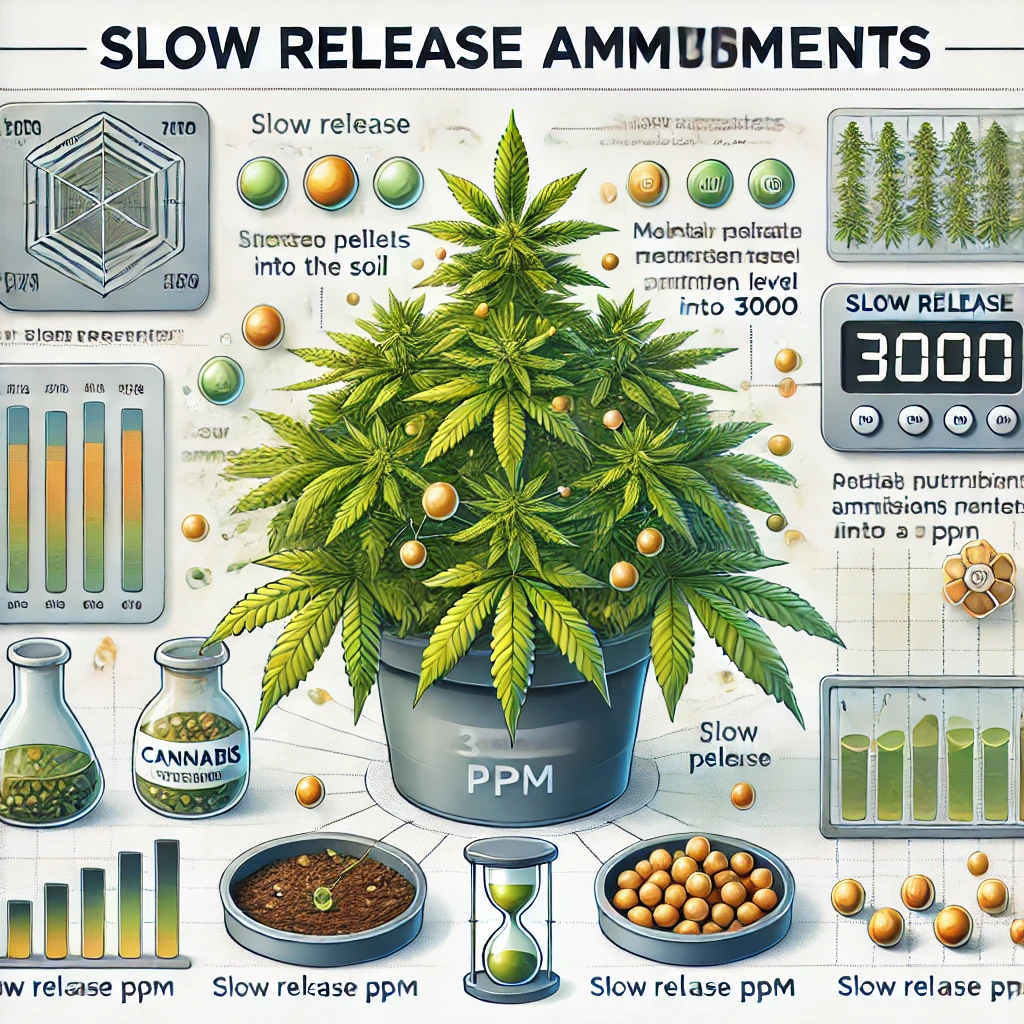
Introduction to Slow Release Amendments
What Are Slow Release Amendments?
Slow release amendments are specialized fertilizers designed to release nutrients gradually over time, ensuring a steady supply to cannabis plants. Unlike traditional fertilizers, these amendments minimize the risk of nutrient spikes, which can harm plant health.
Why They Matter in Cannabis Cultivation
For cannabis growers, maintaining a balanced nutrient supply is crucial. Slow release amendments help prevent nutrient burn and reduce the frequency of fertilizer application, making them an efficient choice for both beginners and seasoned cultivators.
The Science Behind Slow Release Amendments
How Do They Work?
Slow release amendments are coated or engineered to dissolve slowly in soil or water, releasing nutrients in response to environmental factors like temperature and moisture. This ensures plants receive what they need when they need it.
Benefits of Slow Nutrient Release
- Consistency: Provides a steady nutrient flow.
- Efficiency: Reduces waste and overfeeding.
- Convenience: Less frequent application required.
Cannabis Nutrient Needs and PPM
Understanding PPM (Parts Per Million)
PPM measures the concentration of dissolved nutrients in the growing medium. It’s a vital metric for cannabis growers to ensure optimal feeding.
Ideal PPM Levels for Cannabis at Different Stages
- Seedling Stage: 200-400 PPM
- Vegetative Stage: 800-1200 PPM
- Flowering Stage: 1000-1600 PPM
- Late Flowering (High Yield): Up to 3000 PPM for experienced growers.
PPM 3000: The Threshold for Success
Why 3000 PPM Is Important for Cannabis
PPM 3000 represents the upper limit of nutrient concentration for maximizing cannabis yields. When used correctly, it can significantly enhance growth and potency.
Risks of Overfeeding
Exceeding 3000 PPM can cause nutrient burn, stunted growth, and reduced yields. Monitoring is key to avoiding these issues.
Types of Slow Release Amendments for Cannabis
Organic Amendments
Organic options like bone meal, bat guano, and compost provide natural nutrient sources that enrich the soil.
Examples:
- Bone Meal: Rich in phosphorus for flowering.
- Bat Guano: High in nitrogen for vegetative growth.
Synthetic Amendments
Controlled-release fertilizers offer precise nutrient delivery, ideal for hydroponics and soilless mediums.
Choosing the Right Slow Release Amendment
Factors to Consider
- Growing medium (soil, hydroponics, or soilless)
- Cannabis strain requirements
- Budget and environmental impact
Balancing Organic and Synthetic Options
A mix of organic and synthetic amendments can optimize nutrient availability and sustainability.
Application Techniques for Slow Release Amendments
Top-Dressing Methods
Sprinkle amendments on the soil surface for gradual absorption during watering.
Mixing into Soil vs. Hydroponic Use
Pre-mix amendments into soil or incorporate them into hydroponic systems for a steady nutrient supply.
Monitoring Cannabis Growth with PPM 3000
Tools for Measuring PPM
Digital TDS (Total Dissolved Solids) meters are essential for accurate PPM measurement.
Adjusting Nutrients for Optimal Growth
Regularly test and tweak nutrient solutions to maintain ideal PPM levels.
Benefits of Slow Release Amendments in Cannabis Cultivation
Enhancing Yield and Quality
Steady nutrient delivery promotes robust growth, dense buds, and higher potency.
Reducing Nutrient Burn Risks
Slow release minimizes the chance of overfeeding, protecting plant health.
Challenges and Solutions
Potential Issues with Slow Release Amendments
- Nutrient lockout
- Uneven release rates
Strategies for Effective Use
- Monitor soil pH and PPM levels.
- Combine with supplemental feeding as needed.
Real-Life Success Stories Using PPM 3000
Experienced growers have reported increased yields and superior quality when maintaining precise PPM levels and using slow release amendments.
Tips for Beginners
Common Mistakes to Avoid
- Overloading nutrients
- Ignoring PPM measurements
Expert Advice for First-Time Growers
Start with lower PPM levels and gradually increase as plants mature.
Conclusion
Mastering slow release amendments and maintaining PPM 3000 levels can revolutionize your cannabis cultivation. Experiment, monitor, and fine-tune your approach for the best results.
FAQs
What is PPM, and why is it important in cannabis cultivation?
PPM measures nutrient concentration, ensuring plants receive the right amount of food.
How do slow release amendments differ from traditional fertilizers?
They release nutrients gradually, reducing the risk of overfeeding.
Can PPM levels exceed 3000 without harming plants?
Not recommended; exceeding 3000 PPM can cause nutrient burn.
Are organic or synthetic amendments better for cannabis?
Both have advantages; organic is eco-friendly, while synthetic offers precision.
What tools are best for monitoring PPM levels?
Digital TDS meters provide accurate readings.







